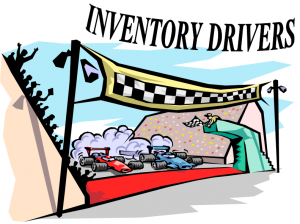Train: to teach a particular skill or type of behaviour through regular practice and instruction. (Oxford Dictionary, 10th edition)
Learning to perform a new task can be as simple as learning to stack cases on a pallet in a factory. It can also involve the assembly of complicated high tech machinery. It might range from learning computer basics to operating an ERP program. Whatever the skill, it is generally understood as teaching people “how” to perform a new skill or task. Understanding “why” is far more complicated, as it involves many seemingly unrelated pieces of information that together show different available options for process improvement.
Both training and education are critically important to a company as they are investments in the future health and growth of the organization. In the current climate of flattened management levels, integrated systems and employee empowerment, it is important that employees realize their potential. If people are a company’s most important resource; it naturally follows that we need to optimize that resource.
So how can employees be encouraged to realize their potential? First, we need to ensure that we do not create system issues that hinder excellence. We need to provide the necessary culture, tools, education and training for optimum performance development. One possibility would be to encourage people, individually or in groups, to look at certification within their field. Do you or your organization make it easy or hard for your people to get training or certifications?
You should want your people to be asking questions such as “How do I take advantage of this opportunity to make my job better and easier? How can I initiate proactive improvement at a departmental level? What certification is applicable to my area? Why should I exert the time and effort to attain any of the many certifications available? What are the benefits to me?”
While the answers to these questions may vary depending on the specific type of certification indicated, the universal benefits are:
- Increased technical knowledge and expertise
- Better leadership and professional skill
- Better promotability
- Recognition by peer & industry groups
By supporting certification, companies also benefits by attaining:
- Improved productivity and competitiveness
- Demonstrated commitment to employees’ development
- Improved business efficiency
APICS – The Association for Operations Management currently offers two different certification processes:
- CPIM (Certified in Production and Inventory Management)
- CSCP (Certified Supply Chain Professional)
These two certification processes are specific to APICS, but additional processes are available in your area. The following are some specific examples and list the offering organizations:
- CPF (Certified Professional Forecaster): IBF (Institute of Business Forecasting)
- CCSP (Certified Customer Service Professional: ICSA (International Customer Service Association)
- CPL (Certified Professional Logistician): SOLE (The International Society of Logistics)
- CPM (Certified Purchasing Manager): ISM (Institute for Supply Management)
Obviously, this is not a complete list of potential certification processes. If you are unaware of a certification or professional organization in your own area, research the internet and approach your manager. It’s your future, your promotability, your career. Are you going to sit back and just react to whatever happens to you or are you going to be proactive and work to improve yourself and your career?
Interested in learning more about courses in Supply Chain?
Check out the APICS website (www.apics.org) or your local APICS chapter for more information (In the Hamilton Ontario area the local chapters website is www.apicshamilton .org). They offer courses through Mohawk College as well as corporate training and courses at outside sites. In addition to the certification courses Hamilton chapter like most APICS chapters also offer the Fundamentals of Operations Management series of courses and a number of different workshops on Inventory Management, Lean and TOC. Again, check out the local websites to see what is available. If you would like more information on Hamilton chapter or APICS in general please feel free to contact me (I am the Executive Vice President for Hamilton chapter) directly at edwhite@jadetrilliumconsulting.com



